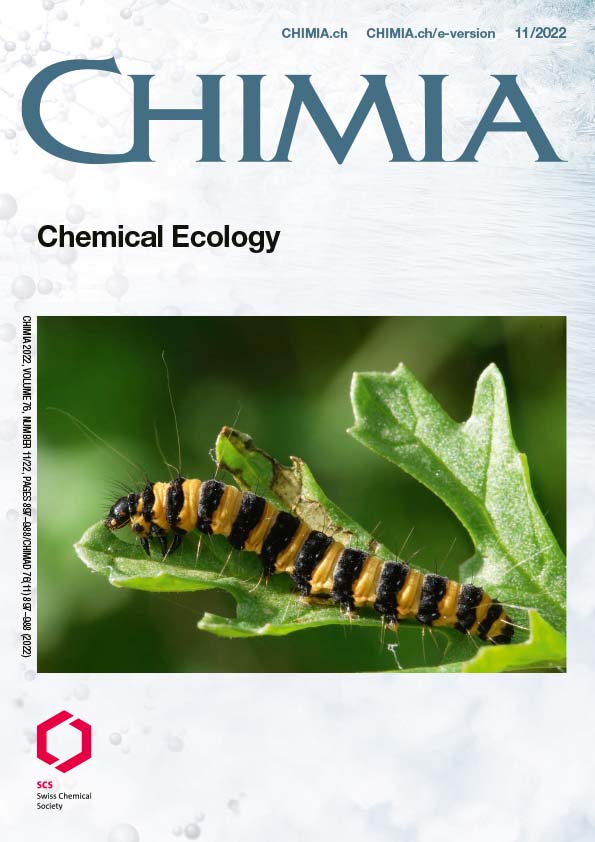The Role of Herbivore-induced Plant Volatiles in Trophic Interactions: The Swiss Connection
DOI:
https://doi.org/10.2533/chimia.2022.900PMID:
38069784Keywords:
Plant defence, Plant-insect interactions, Plant signalling, Plant volatilesAbstract
It is increasingly evident that plants actively respond to the threats and challenges that they come to face while growing. This is particularly manifested in the dynamic responses to insect herbivory, especially in terms of the volatile compounds that the attacked plants emit. Indeed, many plants respond to insect-inflicted damage with the synthesis and release of volatile organic compounds. These emissions, commonly referred to as herbivore-induced plant volatiles (HIPVs), play important roles in the interactions between the emitting plants and their biotic environment. The odorous signal can be picked up and exploited by various organisms: neighbouring plants, herbivores and their natural enemies, such as predators and parasitoid wasps. Coincidence or not, scientists currently working in Switzerland have made numerous key contributions to the work in this field. By highlighting their work, we attempt to give a somewhat historic overview of this field of research.Funding data
-
European Research Council
Grant numbers 788949
Downloads
Published
2022-11-30
Issue
Section
Scientific Articles
License
Copyright (c) 2022 Ted C. J. Turlings, Thomas Degen

This work is licensed under a Creative Commons Attribution 4.0 International License.
How to Cite
[1]
T. C. J. Turlings, T. Degen, Chimia 2022, 76, 900, DOI: 10.2533/chimia.2022.900.







